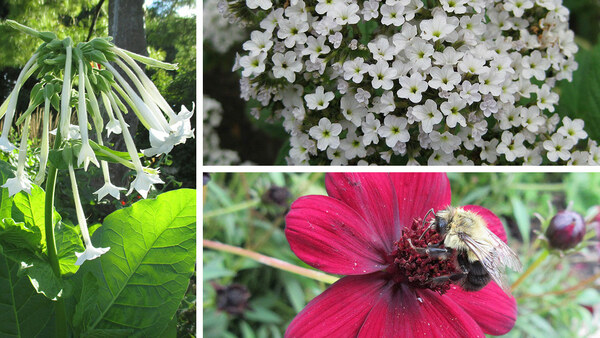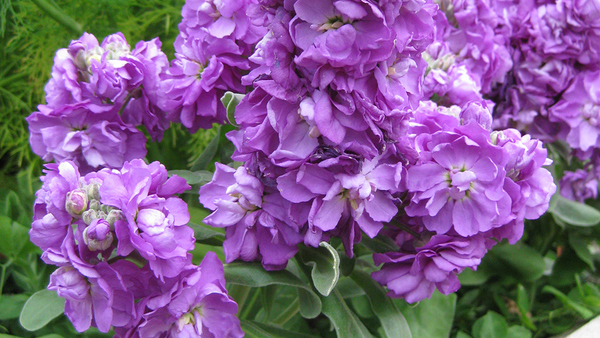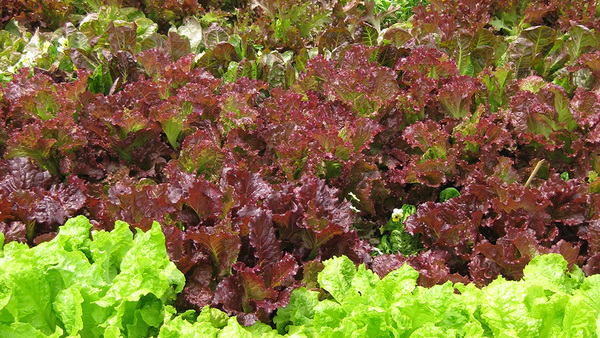
Most gardeners are familiar with garden phlox (Phlox paniculata and cvs., Zones 4–8), woodland phlox (P. divaricata and cvs., Zones 3–8), and the two common species referred to as creeping phlox (P. subulata and cvs., Zones 3–9 and P. stolonifera and cvs., Zones 5–9). The annual phlox (P. drummondii and cvs., annual) has taken on renewed interest in the garden as well. When the use of creeping phlox and annual phlox in the garden is discussed, it’s impossible not to mention the entrancing fragrance from so many of the species, coupled with the value for attracting bees, butterflies, and hummingbirds.
I feel that a garden without phlox (Phlox spp. and cvs., Zones 3–9) is missing something. The no-fuss nature of these members of the Polemoniaceae family, along with their myriad hues and substantial flowering period, make them indispensable in so many Midwest garden locations. With 67 species, there are phlox that fulfill flowering contributions in the early, middle, and late portions of the growing season. In the Midwest, the earliest phlox bridge the gap between spring bulbs and our summer displays, while the later-blooming phlox are integral in our colorful combinations and when a bit of scent is desired.
How to Grow Phlox All Year Long

Creeping phlox gets the show going in early spring
Frequently called the “most colorful of all ground covers”, the sun-loving species Phlox subulata blooms for three to four weeks in early spring with solid flower coverage (commonly white, pink, and lavender blue). The needle-like, semi-evergreen leaves are deer resistant. At 4 to 6 inches tall, this species trails nicely over walls and on slopes. The variety ‘Candy Stripe’ (P. subulata ‘Candy Stripe’, Zones 3–9) is a personal favorite! The other “creeping phlox” (P. stolonifera) is also very worthy of consideration in areas with sun and partial shade. As a native, mat-forming, wildflower ground cover (6 to 8 inches tall), this species and its many cultivars have merit for early flower color and attracting pollinators.

Woodland phlox shines with delightful blooms in midspring
Blooming for almost a month in midspring, 18-inch-tall woodland phlox blends well with spring ephemerals and other shade-tolerant perennials in understory situations where it forms colonies in time. This species thrives in full sun to partial shade and is wonderfully hardy and adaptable throughout the Midwest. The lightly fragrant flowers are most commonly a lavender blue but can also be pink or white. The selection ‘Chattahoochee’ (Phlox divaricata subsp. laphamii ‘Chattahoochee’, Zones 3–8) is a personal favorite due to the bright purple eye on its soft lavender blue flower. This variety was also a Royal Horticultural Society award winner in 1993. Pollinators will certainly visit this species as well.

Annual phlox perks up plantings in late spring
This species is a 6- to 12-inch-tall native wildflower to Texas. Many cultivars have been introduced over the years. The tight flower clusters with 1-inch-diameter blooms create quite an impact beginning in late spring and into summer. Preferring full sun to partial shade and well-drained sites, this species also provides a light fragrance. Look for the Popstars, Gisele, and Phloxy series for a wide range of color and interest.

Garden phlox is a fragrant summertime blooming classic
This classic, fragrant perennial has a long association with cottage-style gardening, and the lengthy summer bloom time is always remarkable, sometimes extending into early fall. This species can reach up to 4 feet tall and is a great summer companion for other perennials. The standard five-petaled flowers frequently have a conspicuous “eye” of a different color, producing a two-toned effect. There are some great variegated foliage selections such as ‘Shockwave’ (Phlox paniculata ‘Shockwave’, Zones 4–8), and further breeding in this species has created many reduced-height selections that have potential in the front of the border. Full sun is ideal for this species, although partial shade is acceptable, particularly in portions of the Midwest that experience hot summers. There are so many amazing varieties out there that it’s difficult to choose just one.

Phlox Growing Tips
Phloxes, as a general rule of thumb, prefer decent soil and adequate moisture. The old adage of “moist but well-drained” holds true for the majority of phlox. Air circulation is also of importance, as powdery mildew is not uncommon during those cool and wet years or in crowded situations with poor air movement. Consider avoiding overhead watering when at all possible. More disease-resistant cultivars have been introduced recently, which is certainly appreciated with the frequently hot and humid summers we experience in the Midwest. However, Mother Nature certainly has some input as well.
If mildew is a concern, consider an aggressive fall cleanup by cutting stems to the ground and removing all debris (not placed in the compost pile). This severe cutback can also be done earlier in the season if the mildew infection is rampant. New growth will emerge after a midseason cutting.
A layer of compost every spring can help give phlox a boost, and a thin layer of mulch can further help retain moisture and minimize weed competition. If a decrease in blooms is seen over time, it may be the result of congestion around the crown. This certainly indicates that division is warranted. Division of phlox can be accomplished every two to three years or as needed.
My Favorite Phlox Varieties to Grow
There is a wide spectrum of phlox species and hybrids to enjoy, although some of the less common selections may be hard to find at local nurseries and garden centers. He’s a list of some of my favorites.
‘Minnie Pearl’ hybrid phlox
(P. ‘Minnie Pearl’, Zones 3–8)
This fragrant 20-inch-tall selection produces copious, clear white flowers that attract bees, butterflies, and hummingbirds.

‘Ping Pong’ hybrid phlox
(P. × arendsii ‘Ping Pong’, Zones 3–8)
This is a very showy 24-inch-tall hybrid with amazing light pink flowers, each with a red eye.

Sand phlox
(P. bifida, Zones 4–8)
This is an exquisite 4- to 6-inch-tall species with flower colors ranging from pale blue to nearly white.

‘Triple Play’ smooth phlox
(P. glaberrima var. triflora ‘Triple Play’, Zones 3–8)
This striking 18-inch-tall, variegated selection has lavender blooms and good disease resistance.

Learn more:
—Mark Dwyer is the garden manager for the Edgerton Hospital Healing Garden in Edgerton, Wisconsin, and he operates Landscape Prescriptions by MD.
Photos: Mark Dwyer
Fine Gardening Recommended Products

Johnny’s Selected Seeds Connecta® Cultivation Kit
Fine Gardening receives a commission for items purchased through links on this site, including Amazon Associates and other affiliate advertising programs.

ARS Telescoping Long Reach Pruner
Fine Gardening receives a commission for items purchased through links on this site, including Amazon Associates and other affiliate advertising programs.

Lee Valley Mini Garden Shear Set
Fine Gardening receives a commission for items purchased through links on this site, including Amazon Associates and other affiliate advertising programs.



















Comments
Log in or create an account to post a comment.
Sign up Log in